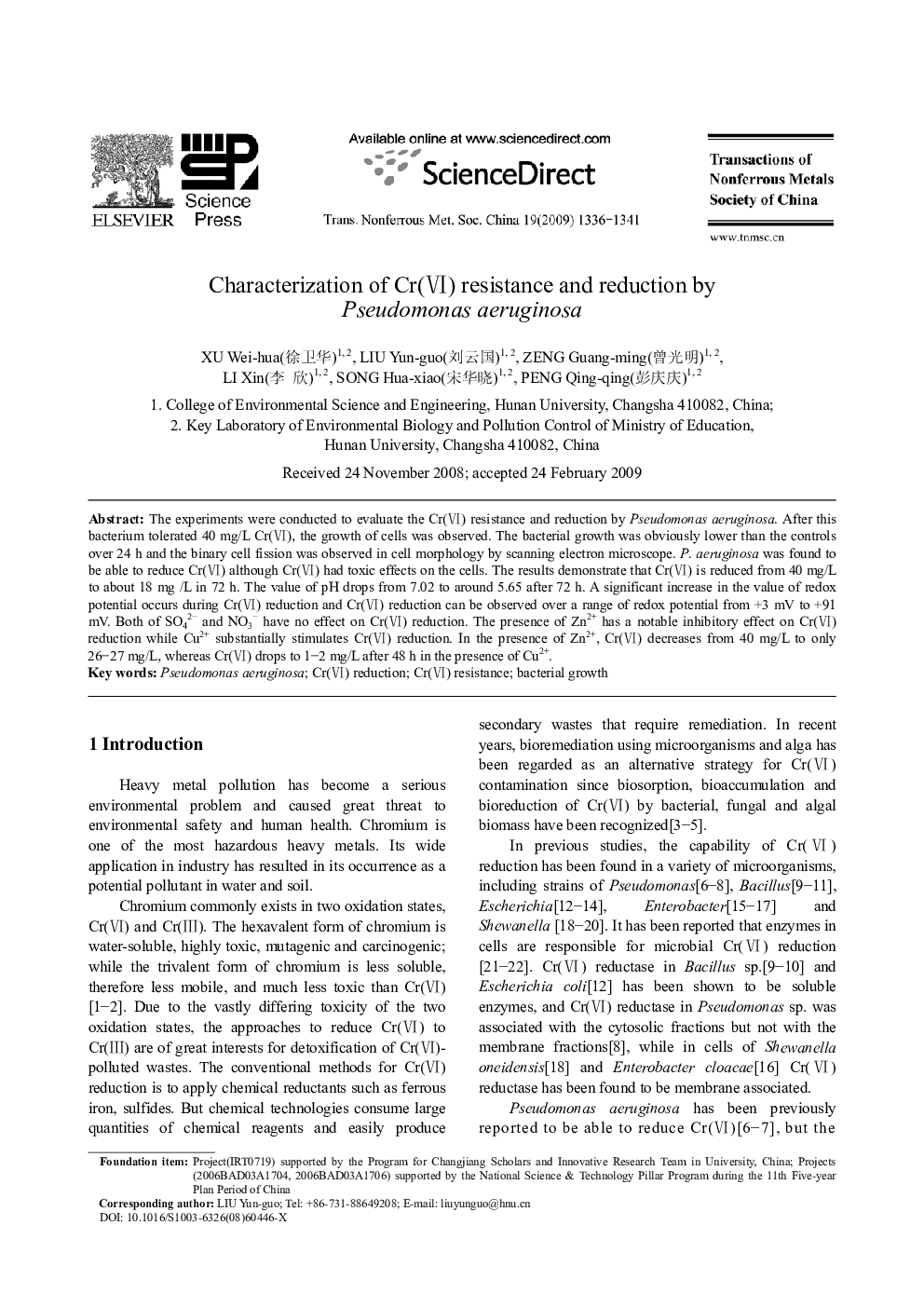| کد مقاله | کد نشریه | سال انتشار | مقاله انگلیسی | نسخه تمام متن |
|---|---|---|---|---|
| 1640568 | 1517033 | 2009 | 6 صفحه PDF | دانلود رایگان |

The experiments were conducted to evaluate the Cr(VI) resistance and reduction by Pseudomonas aeruginosa. After this bacterium tolerated 40 mg/L Cr(VI), the growth of cells was observed. The bacterial growth was obviously lower than the controls over 24 h and the binary cell fission was observed in cell morphology by scanning electron microscope. P.aeruginosa was found to be able to reduce Cr(VI) although Cr(VI) had toxic effects on the cells. The results demonstrate that Cr(VI) is reduced from 40 mg/L to about 18 mg /L in 72 h. The value of pH drops from 7.02 to around 5.65 after 72 h. A significant increase in the value of redox potential occurs during Cr(VI) reduction and Cr(VI) reduction can be observed over a range of redox potential from +3 mV to +91 mV. Both of SO42− and NO3− have no effect on Cr(VI) reduction. The presence of Zn2+ has a notable inhibitory effect on Cr(VI) reduction while Cu2+ substantially stimulates Cr(VI) reduction. In the presence of Zn2+, Cr(VI) decreases from 40 mg/L to only 26–27 mg/L, whereas Cr(VI) drops to 1–2 mg/L after 48 h in the presence of Cu2+.
Journal: Transactions of Nonferrous Metals Society of China - Volume 19, Issue 5, October 2009, Pages 1336-1341